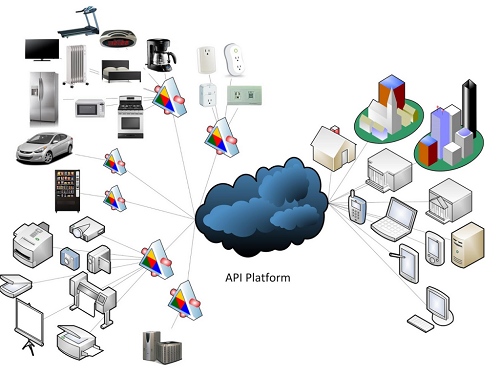API stands for Application Programming Interface, and it’s defined as a set of routines, protocols, and tools for building software applications.
To better understand the API in today’s world, let’s look at each individual part:
• Application — the tools / programs that perform a specific function
• Programming — the language used to teach these tools their function
• Interface — the boundary shared by two programs that allow both to communicate with one another
APIs define what functionality is available, how it must be used, what formats are acceptable as input as well as what will be returned as output. It’s a software-to-software interface, not a user interface.

Commonplace example
A layman’s example often cited when explaining how an API works is a request for weather information. Say, for example, you are in New York and wish to know what the temperature is in San Francisco. If there’s no API in place, then the weather app through which you are requesting this information will go to weather.com and read the webpage for the information. With an API, however, the app will send the query to the weather.com API in a structured format like JSON, which then replies with an appropriate, structured response that gets presented to the user.
The benefit of working with an API is even more evident when we more closely consider the former option; that is, going to the website directly. In this instance, the app is relying on a consistent structure of data for it to be able to go in and gather the information. If, however, the site goes through a redesign, then the app may no longer work as it won’t be able to understand the webpage anymore. After all, a computer is only as smart as the software a programmer has written for it.
APIs in the IoT
So, an APIs job is to serve as a digital middleman and inform users / programmers about everything they request, exactly how to ask for it, and how to receive it. This keeps the requests for and disseminating of data clean and perhaps more importantly, error-free.
One industry that has benefited greatly from the use of APIs is the Internet of Things (IoT). Due to the massive amount of data that these technologies churn out regularly, whether it’s an e-health device, smart thermostat, or intelligent supply chain, it is imperative that an API be put in place so that the user can access this information from these technologies to gain valuable insight into their behavior, anomalies within the technology’s operation, security risks, and more. Without an API, this information is simply unavailable.

Outlook
To provide better APIs for these technologies, hardware engineers are now working more closely with programmers in designing appropriate API platforms that manage such things as gateways, security, and access management. The API serves as the bridge between these worlds, while also providing the end user with valuable information to make smart adjustments in his / her life.
When applied successfully, whether it’s for an intelligent home, smarter supply chain manufacturing, or e-health application, it will positively influence the way in which people live, work, and play.
Advertisement
Learn more about Electronic Products Magazine





